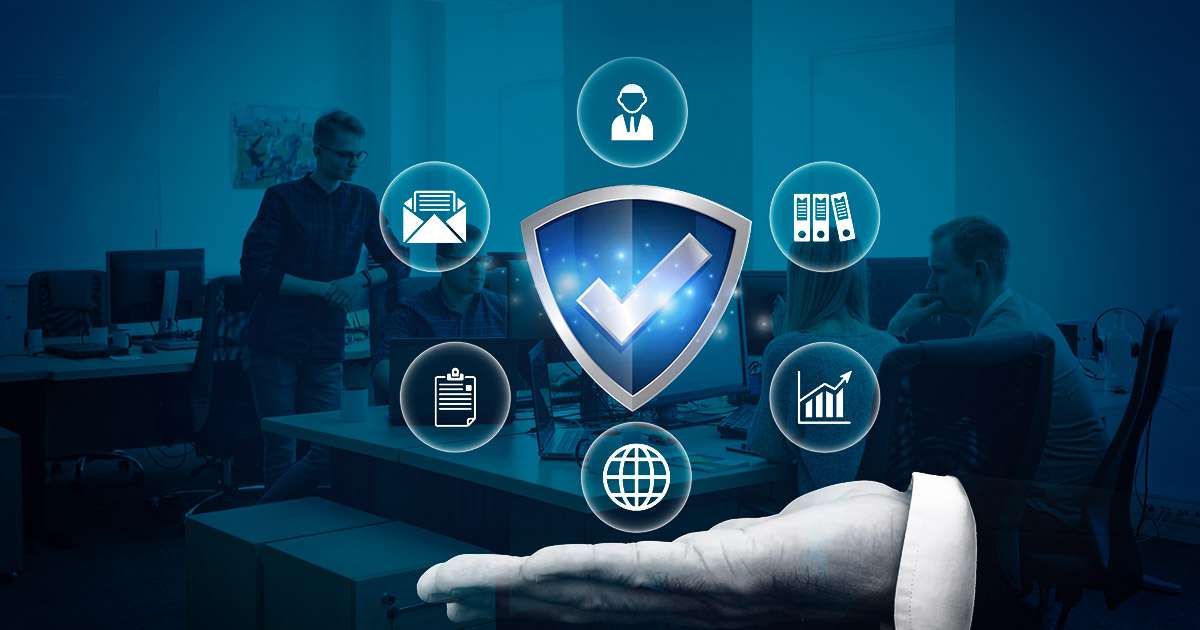The Power of Human Firewalls: Enhancing Cybersecurity with People Power

In cybersecurity, new technologies are always being developed to protect digital information. Even with strong firewalls, antivirus programs, and encryption, one important part is sometimes forgotten: people. That’s where the idea of a “human firewall” comes in. It shows how individuals are key to ensuring a company’s strong cybersecurity.
What is a human firewall?
A human firewall is when everyone in a company works together to protect against cyber threats. It’s not a physical barrier, but more about being aware and careful online. Like a regular firewall, which filters internet traffic, a human firewall involves people who watch out for dangers and follow security rules to keep information safe.
What is a human firewall in cybersecurity?
A human firewall is a team of trained individuals responsible for preventing cyber attacks in an organization. They are the first line of security against any breach. By recognizing suspicious activities, they can stop cyber attacks that target technological weaknesses.
They are also taught what to do if the organization’s IT systems are compromised. Establishing a human firewall in your organization can also make every team member feel responsible and motivated to protect against cyber threats.
Why are human firewalls so vital to security?
While technology is crucial for cybersecurity, it’s not perfect. Bad actors constantly devise new ways to exploit human weaknesses and circumvent even the most advanced security systems. That’s where the human firewall comes in.
Dealing with Human Mistakes
Even with advanced cybersecurity technologies, many breaches occur because humans make mistakes. Things like falling for phishing emails, using weak passwords, or accidentally giving access to the wrong person can make a company vulnerable. A well-trained and alert human firewall can reduce these risks by promoting security awareness and following best practices.
Adapting to New Dangers
Cyber threats are always changing, with new ways to attack popping up all the time. While technology catches up, a human firewall can respond fast. Educated employees can spot suspicious activities, report possible threats, and take action to stop or limit damage before it gets worse.
Working with Technology
Human firewalls team up with technology to strengthen security. For example, employees trained to spot and report suspicious emails can stop malware from getting into the company’s network, even if it gets past email filters. Likewise, careful employees who follow access rules can stop unauthorized access, even if someone breaches the network’s outer defenses.
How to create an effective human firewall?
Building a strong human firewall involves training, raising awareness, and creating a security culture within the organization. Here are some key ways to do this:
Training for Security Awareness
Regular training is important to help employees spot and deal with potential threats. This includes teaching them about phishing, managing passwords, recognizing social engineering tactics, and reporting incidents. Interactive training, like simulations and real-life scenarios, can help reinforce these lessons.
Continued Learning and Communication
Since cyber threats are always changing, employees need to stay updated. Companies should have ongoing education programs, share security updates, and provide channels for employees to report suspicious activities or get advice on security matters.
Strong Security Policies
Clear security policies are crucial for a strong human firewall. These policies should cover things like acceptable computer use, access control, how to respond to security incidents, and the consequences of not following the rules. Regular evaluations and revisions are necessary to keep these policies current.
Promoting a Security Culture
Companies should aim to create a culture where security is everyone’s responsibility. This can be done by encouraging open communication, encouraging employees to raise security concerns, and recognizing and rewarding those who practice good security habits.
Continuous Monitoring and Improvement
Building a robust human firewall is a continuous process. Companies should regularly check the effectiveness of their security awareness programs, get employee feedback, and analyze security data to see where they can improve. Simulated phishing attacks or other tests can also help identify weaknesses and reinforce the need for vigilance.
What are the threats to human firewalls?
Threats to human firewalls can come in various forms, often exploiting vulnerabilities in human behavior and organizational practices. Here are some common threats:
- Phishing Attacks: Phishing emails attempt to deceive people into disclosing personal information or installing malware. They frequently appear to come from a legitimate source and are difficult to identify.
- Social Engineering: This includes tricking someone into disclosing secret information or doing activities jeopardizing security. Attackers may impersonate trusted individuals or use psychological tactics to gain access to sensitive information.
- Weak Passwords: Using weak or generally guessable passwords allows attackers to gain unauthorized access to systems and data.
- Lack of Security Awareness: Employees unaware of cybersecurity best practices are likelier to fall victim to scams and other cyber threats.
- Insider Threats: Employees or other trusted individuals who purposefully or accidentally abuse their access to systems or data can pose a substantial threat to cybersecurity.
- Unpatched Systems: Failure to constantly update and patch software and systems might make them vulnerable to attack.
- Poor Security Practices include sharing passwords, using unsecured networks, and failing to lock devices when not in use.
- Third-party Risks: Businesses that rely on third-party vendors for services may be at risk if those vendors do not have strong cybersecurity measures.
- Physical Security Breaches: Physical access to devices or systems can also pose a threat if not properly secured.
Addressing these threats through education, training, and robust security policies and practices can help organizations enhance their human firewalls and reduce the risk of cyber attacks.
How to fortify your human firewall?
Strengthening the human firewall involves implementing strategies to improve employee awareness, knowledge, and behaviors related to cybersecurity. Here are some key steps:
- Security Awareness Training: Employees should receive frequent cybersecurity best practices training, such as spot phishing efforts, generating strong passwords, and securing critical information.
- Phishing Simulations: Conduct phishing simulations to help employees identify and avoid attacks. Deliver feedback and additional training to people who fall victim to simulated phishing emails.
- Access Control: Implement strong access control measures, such as multi-factor authentication (MFA), to prevent unauthorized access to sensitive information.
- Incident Response Plan: Create and explain an incident response strategy so employees understand what to do during a security breach.
- Regular Security Updates: Guarantee that all software and systems are frequently updated with the most recent security updates to guard against known vulnerabilities.
- Strong Password Policies: Implement strong password regulations, such as demanding complicated passwords and frequent password changes.
- Employee Engagement: Engage employees in cybersecurity initiatives by soliciting their input and feedback and recognizing and rewarding good security practices.
- Role-Based Training: Customize training programs for various jobs within the firm to ensure employees receive relevant and focused cybersecurity knowledge.
- Continuous Improvement: Regularly evaluate and update your cybersecurity policies and processes to reflect new threats and emerging best practices.
- Third-party Risk Management: Evaluate and manage the cybersecurity threats offered by third-party vendors and contractors with access to your systems or data.
By taking these steps, organizations can strengthen their human firewall and reduce the risk of falling victim to cyber-attacks
Build Your Strong Human Firewall in Cyber Security!
Building a strong human firewall is essential in protecting organizations from cyber threats. While technological solutions are crucial, they are not infallible, and human error remains a significant risk factor. Organizations may reinforce their human firewall by training in security awareness, cultivating a security culture, and implementing strong security policies.
Regular updates, continuous monitoring, and effective incident response plans are vital to adapting to evolving threats. By taking these steps, organizations can significantly reduce their vulnerability to cyber-attacks and protect their valuable assets.

